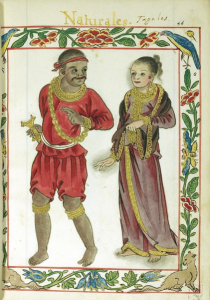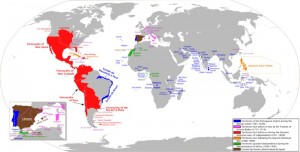
Boxer Codex Boxer Codex is a manuscript written circa 1595 which contains illustrations of Filipinos at the time of their initial contact with the Spanish. Aside from a description of and historical allusions to the Philippines and various other Far Eastern countries, it also contains seventy-five colored drawings of the inhabitants of these regions and their distinctive costumes. Fifteen illustrations deal with Filipinos. [1] It is believed that the original owner of the manuscript was Luis Pérez das Mariñas, son of Governor General Gómez Pérez das Mariñas, who was killed in 1593 by the Sangleys (Chinese living in the Philippines). Luis succeeded his father in office as Governor General of the Philippines. Since Spanish colonial governors were required to supply written reports on the territotries they governed, it is likely that the manuscript was written under the orders of the governor. [2] The manuscript's earliest known owner was Lord Ilchester. The codex was among what remained in his collection when his estate, Holland House in London, suffered a direct hit during an air raid 1942. The manuscript was auctioned in 1947 and came into the possession of Prof. Charles R. Boxer, an authority on the Far East. It is now owned by the Lilly Library at Indiana University. [3] The Boxer Codex depicts the Tagalogs, Visayans, Zambals, Cagayanons and Negritos of the Philippines in vivid colors. Except for the Chinese, however, its illustrations of inhabitants of neighboring countries are odd looking. This suggests that the artist did not actually visit the places mentioned from the text, but drew from imagination. Boxer notes that the descriptions of these countries are not original. The account of China, for example, was largely based on the narrative of Fray Martin de Rada. The technique of the paintings suggests that artist may have been Chinese, as does the use of Chinese paper, ink and paints. [4] Native Pre-colonial inhabitants of the Philippines Tagalog royalty and his wife, wearing the distinctive color of his class (red). Tagalog maginoo (noble) and his wife, wearing the distinctive color of his class (blue. A timawa or tumao (noble) couple, Visayan Pintados Visayan kadatuan (royal) couple . References ^ Alfredo R. Roces, et. al., eds., Boxer Codex in Filipino Heritage: the Making of a Nation, Philippines: Lahing Pilipino Publishing, Inc., 1977, Vol. IV, p. 1003. ^ Ibid., p. 1004. ^ Ibid., p. 1003. ^ Ibid. … [Read more...]

















